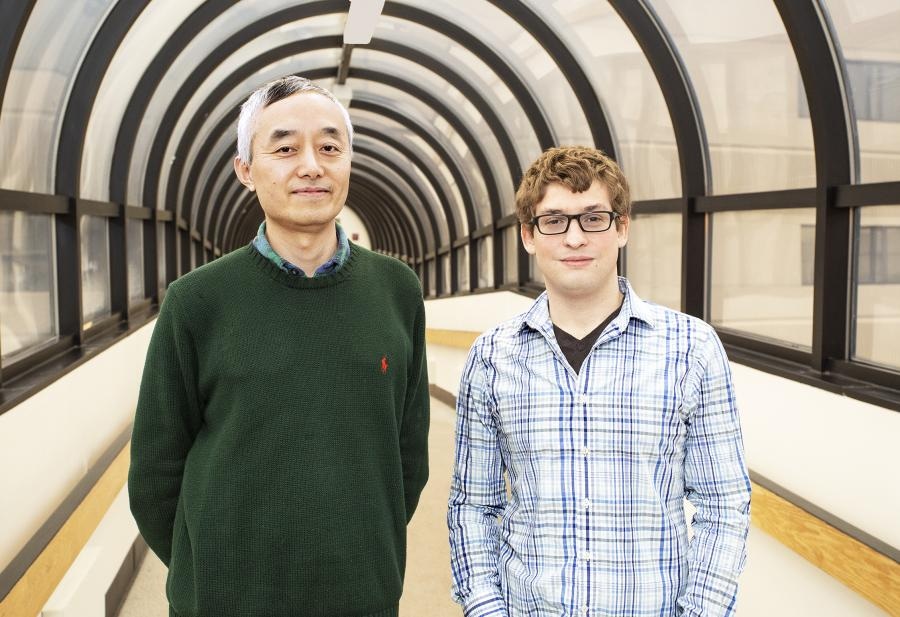Feb 19 2019
Geomagnetic storms, northern lights, and solar flares that can disrupt electric power grids and cell phone service are caused by rapid magnetic reconnection—the fast convergence, isolation, and explosive snapping together of magnetic field lines.
 Physicists Jonathan Jara-Almonte, right, and Hantao Ji, coauthor and adviser. (Image credit: Elle Starkman/Office of Communications)
Physicists Jonathan Jara-Almonte, right, and Hantao Ji, coauthor and adviser. (Image credit: Elle Starkman/Office of Communications)
Such a phenomenon occurs in plasma—the state of matter containing free electrons as well as atomic nuclei or ions making up 99% of the visible universe. However, it is not properly known whether fast reconnection can take place in partly ionized plasma—that is, plasma containing atoms and also ions and free electrons.
Now at the U.S. Department of Energy’s (DOE) Princeton Plasma Physics Laboratory (PPPL), researchers have developed the first fully kinetic model of the behavior of plasma particles and discovered that fast reconnection can definitely happen in partly ionized systems. When compared to fluid models that treat plasma as a continuous medium instead of as a collection of separate particles, kinetic models have the potential to replicate the velocity and distribution of countless numbers of particles.
There is a whole class of partially ionized plasmas whose link to reconnection has not been well studied. We have now demonstrated that fast reconnection can occur in partially ionized systems.
Jonathan Jara-Almonte, Study Lead Author and Physicist, Princeton University
The results of the study have been reported in Physical Review Letters.
For instance, the study indicates that fast reconnection in the partly ionized plasma within the solar chromosphere—the area between the halo-like solar corona and the surface of the sun—can possibly contribute to the development of jet streams. Streams like these are a potential source of the solar wind that reflects charged, hot plasma off the magnetic field of Earth.
Important implications
For the vast clouds of gas, the interstellar medium, and dust filling the cosmos between stars, fast reconnection in partly ionized plasma has significant implications. The dense and cold areas of the interstellar medium where stars are formed are extremely poorly ionized, and the occurrence of fast reconnection inside these areas can aid in removing magnetic fields that prevent the formation of stars.
Figuring out when and where fast reconnection takes place still continues to be a mysterious problem, and past analytical predictions for partly ionized plasmas depended on extrapolating from completely ionized counterparts. The latest simulations, conducted on PCs at Princeton University, showed that the transition to fast reconnection happens only when the current sheet is relatively thinner than estimated. These outcomes indicate that the transport of heat and plasma is different in partly ionized plasmas and can change how and when fast reconnection takes place.
These discoveries concentrate on reconnection on an extremely small scale and are different from the process that takes place in the solar chromosphere. Nevertheless, the simulation showed to be compatible with reconnection both in small-scale laboratory experiments and in the upper chromosphere.
As a next step, Jara-Almonte is planning to compare the kinetic simulation findings with those of fluid simulations, which have dominated earlier modeling of partly ionized plasmas. The paper was co-authored by PPPL physicists Hantao Ji, professor of astrophysical sciences at Princeton University; Masaaki Yamada, principal investigator of the Magnetic Reconnection Experiment (MRX) at PPPL; and Will Fox, along with Bill Daughton of Los Alamos National Laboratory. The DOE and NASA supported the study.